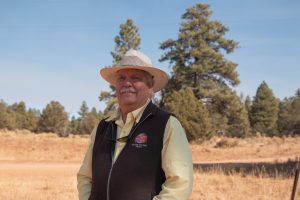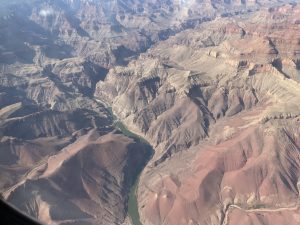- Slug: BC-CNS Little Colorado Dams, 885 words.
- 3 photos and captions below.
- Video by Melanie Porter here.
By James Carr
Cronkite News
PHOENIX – A Phoenix company wants to build two massive hydroelectric projects on the Little Colorado River, a main tributary of the Colorado River, which carves the Grand Canyon. Environmentalists and Native Americans say the projects threaten life within the Canyon and would defile sacred land.
Pumped Hydro Storage LLC has applied for permits to assess the feasibility of two projects consisting of four dams, two reservoirs and generators. Approval of the permits only would allow the study of the area, not construction.
The Hopi Tribe, which holds the land in question to be sacred, and the Grand Canyon Trust filed motions to intervene in the permit process. Although the projects would be about 5 miles outside Grand Canyon National Park, they would directly affect the water supply of the canyon, according to the trust, whose stated mission is to safeguard the Canyon and the Colorado Plateau while supporting the rights of Native people.
One of the Grand Canyon’s most iconic features is the blue-green waters of Havasu Creek, which feeds a series of waterfalls before tumbling into the Colorado River. The Grand Canyon Trust argues that a hydroelectric project potentially could change water patterns, resulting in the creek losing its blue-green tint because of a shift in sediment.
The Hopi Tribe considers the Grand Canyon and the Little Colorado to be sacred. Clark Tenakhongva, Hopi vice chairman, said the Canyon is the birthplace of his people and is fundamental to Hopi culture.
“The Creator came to us with the higher powers and says, ‘OK, I’m allowing you to be part of this land base. But you got to comply with my standards,’” Tenakhongva said. “So Hopi at the time of emergence from the bottom of the Grand Canyon, we’re told we are the stewards of the land and that’s something that’s still very highly respected.”
Jonathan Nez, president of the Navajo Nation, said the Grand Canyon is sacred to many tribes.
“We know that the Little Colorado River is sacred and water is life,” he said. “That whole region there, the Little Colorado River, the Grand Canyon, is considered sacred and holy by all the tribes in the state of Arizona, and many more throughout the Southwest and the Hopi Tribe considers the same for that area. It’s on the Navajo Nation.”
The Grand Canyon Trust is concerned about the impact the dams would have on the local biome and the endangered humpback chub, a small fish that lives only in the Grand Canyon. Roger Clark, the Grand Canyon program director with the Grand Canyon Trust, said the dams could disrupt their habitat.
“The Little Colorado River confluence with the big Colorado River has been the primary breeding ground for this fish for over a million years,” Clark said. “You have to keep in mind this fish is found nowhere else in the world. It’s specifically adapted to the Colorado River and it’s hanging on for dear life.”
The project would involve displacing and holding water, which would not only affect the water’s temperature but also would limit the amount of sediment in the Little Colorado, according to the Grand Canyon Trust.
Pumped Hydro Storage would buy renewable energy at its peak during the day and use it to pump water from the Little Colorado to the higher of the two reservoirs. When renewable energy costs more, such as at night, the system would release the water into the lower reservoir, using the flow to generate hydroelectricity for sale at a profit.
One main reason for having the projects on the Little Colorado is that power lines left over from the now defunct Navajo Generating Station could be used for this project, reducing the cost for infrastructure.
Steve Irwin, manager of Pumped Hydro Storage, said the location makes sense considering that some facilities already are in place and workers are available.
“There’s lots of areas in Arizona where you could do this, but I would say well over half of the good locations are on (Native American) reservations. And the reservations need work, especially up there,” Irwin said. Hundreds of people lost their jobs when the Navajo Generating Station and the Kayenta Mine closed this year.
The Grand Canyon has a contentious history with dams. The Glen Canyon Dam near Page, which was finished in 1963, flooded parts of the upper Grand Canyon and sacred lands.
“Look what (Glen Canyon) did, it flooded all of the upper basin of the Colorado all the way into Utah,” Tenakhongva said, “and some of these cultural significant sites are no longer accessible or can’t be seen. Some of the land base has been taken over (by) water. Whereas before it was just nothing but a desert with a small stream flowing through it.
“But who’s benefiting from it? It certainly ain’t the Hopi or the Navajo tribes.”
Construction crews won’t be breaking ground anytime soon. The permits would be preliminary, meaning the company can only conduct surveys and tests to determine the feasibility of the project and its environmental impact.
The window for public comment on these two proposals closed Nov. 22, and now it is up to the Federal Energy Regulatory Commission to issue a ruling.
For more stories from Cronkite News, visit cronkitenews.azpbs.org.
^_=


